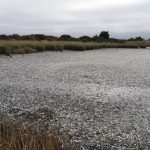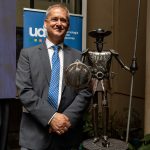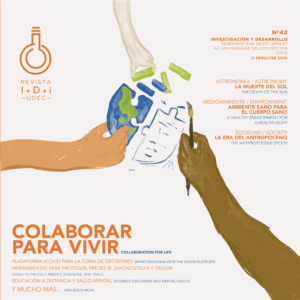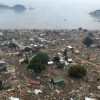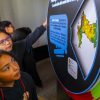INCAR and COPAS Coastal researchers have designed an algorithm that uses meteorological and oceanographic information to generate a numerical value to recognize beaching risks, which is translated into three levels expressed using a traffic light system.
By: Celeste Burgos Badal, Journalist – COPAS Coastal cburgos@oceanografia.udec.cl | Images: Courtesy of COPAS Coastal
The Biobío region, particularly the Gulf of Arauco, is among the areas with the highest levels of fish beaching in Chile. This seemingly increasing phenomenon occurs mainly in summer and directly impacts coastal communities’ productive and subsistence activities.
According to Fabián Tapia, academic at the University of Concepción and deputy director at the COPAS Coastal Center, “the growth of areas with oxygen-poor waters in the equatorial Pacific and off the coast of Chile-Peru, combined with an intensification of southwesterly winds during spring-summer, is the main cause of coastal hypoxia events in our region.” It is essential to understand that this rise of cold and low-oxygen waters from the depths towards the coastal area has occurred for thousands of years on coasts like ours, but it has become ever more frequent and intense in recent times, which “could explain the rise in sardine and anchovy beaching incidents, especially in summer months,” says the doctor in Biological Oceanography of the Massachusetts Institute of Technology (MIT).
According to the scientist, “until recently, every new fish beaching seemed to catch us off guard.” This motivated a team of researchers from the INCAR and COPAS Coastal centers to design an algorithm that calculates a beaching risk index based on meteorological and oceanographic information available for the area of interest, in this case, the Gulf of Arauco. The initiative, funded by the Gulf of Arauco Ecosystem Research Program (PREGA, in Spanish), makes calculations using a numerical scale from 0 to 10, with higher values indicating a greater risk of beaching. For communication purposes, this scale was divided into three sections, with increasing risk and expressed using the colors of a traffic light. It was published daily on a website and social networks between November 2022 and May 2023.
Effectiveness and applicability of the model
On Thursday, March 23rd, 2023, there was a beaching on Pingueral Beach when the algorithm had indicated a high-risk condition (red light) for the eighteenth day in a row. Fabian Tapia commented that “on the one hand, it was a relief to see that the traffic light marked red when a beaching occurred, even though we had already left the window of dates when these events typically occur; on the other hand, the fact it occurred after almost 20 days with high risk, and after two other shorter red light periods during the summer, reminds us that the index quantifies a risk condition, but does not predict a beaching, because for that we would have to be able to predict fish behavior.”
The index generated by this project not only makes it possible to assess the risk of beaching quantitatively but also helps local authorities and relevant public services be better prepared in higher probability periods. According to Tapia, “this traffic light system could be implemented throughout the country, as this first version of the index was set up to be calculated using available satellite and meteorological information. Future versions should incorporate information from onsite measurements and transmitted in real-time, such as those of the UdeC Oceanography Department and COPAS Coastal in Dichato and the Port of Coronel, through the CDOM PORTUARIO project”.
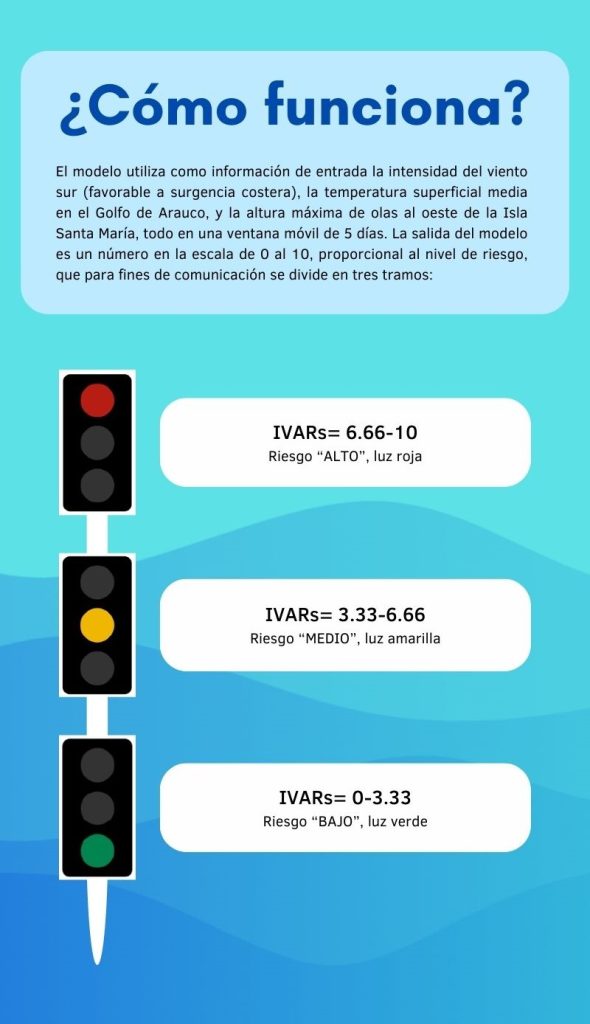
Hypoxia in the ocean under the microscope
Fish beaching on the Chilean coasts is a reminder of the link between global climate trends and changes in environmental conditions at a local level, including the oxygenation level of our coastal waters. For this reason, given the ecological and socio-economic importance of many of the marine species that these waters harbor, members of COPAS Coastal have developed parallel research that aims to understand how some common and abundant seafood species in the region adapt to the rigorous conditions of low oxygen. To do this, a team led by Dr. Valentina Valenzuela, researcher of the “Coastal Ecosystems in Evolution” line of COPAS Coastal, has studied the changes in the expression of genes associated with physiological stress in these species and how the microbiota of these organisms can change in response to low oxygen conditions.
Dr. Valenzuela pointed out that the changes in the microbiota detected in animals exposed to hypoxic waters result in a predominance of bacterial populations capable of fermentation and other chemical reactions that occur in the absence of oxygen. “We believe that these variations in the microbiome of organisms is an adaptation strategy to the lack of oxygen in the water, as these bacteria play an important role in the development and response to the environment of organisms,” she explained.
Last modified: 3 de septiembre de 2025

